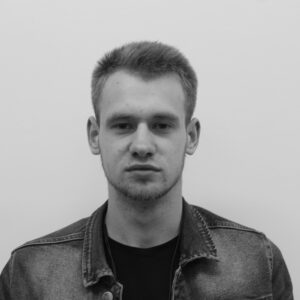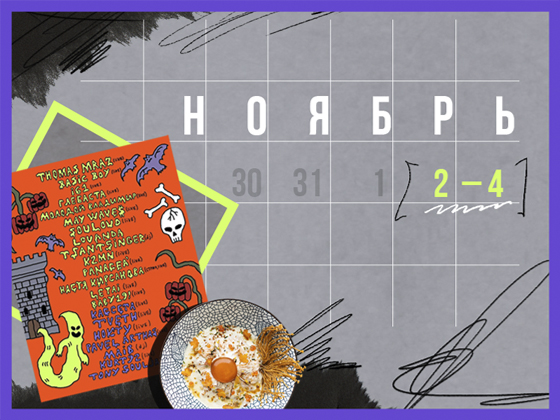The era of superheroes. History and history of the great 90s art parties
Remembering the Moscow art party of the nineties, it is worth saying, first of all, how it was in general. After all, 32 years ago contemporary art, splendid exhibitions, art work, etc. There were no centres. The mainstream was still dominated by perestroika kitsch and socialist realism diluted with abruptly “discovered” modernism and avant-garde classics.
Later work was done in abandoned buildings and private apartments, in attics and basements distributed for workshops, and in 1991 sometimes in galleries. The latter appeared first: in July 1988, M’Ars opened, and the following year, together with Aidan Salakhova, Evgeny Mitta and Alexander Yakut, he created the First Gallery. In the same year, Andrey Erofeev begins to collect the first state collection of contemporary art in the Tsaritsyno Museum-Reserve. Finally, in November 1990, the gallery was opened by Marat Gelman, the main curator of the period.
-
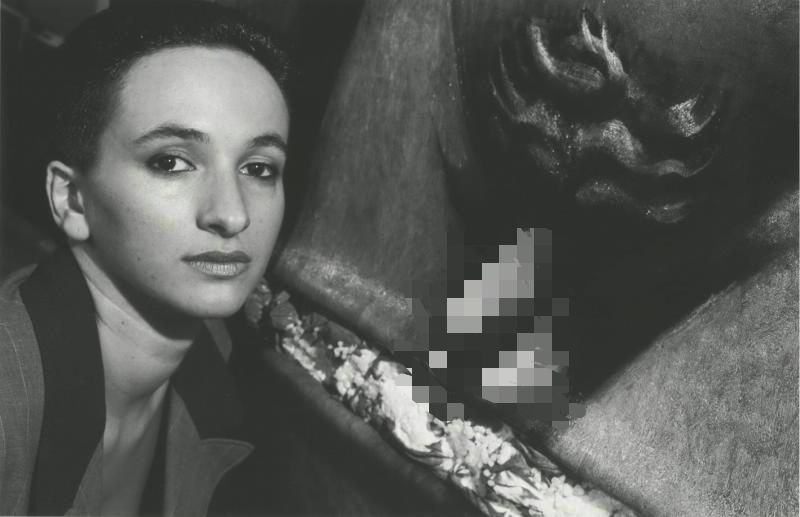
-
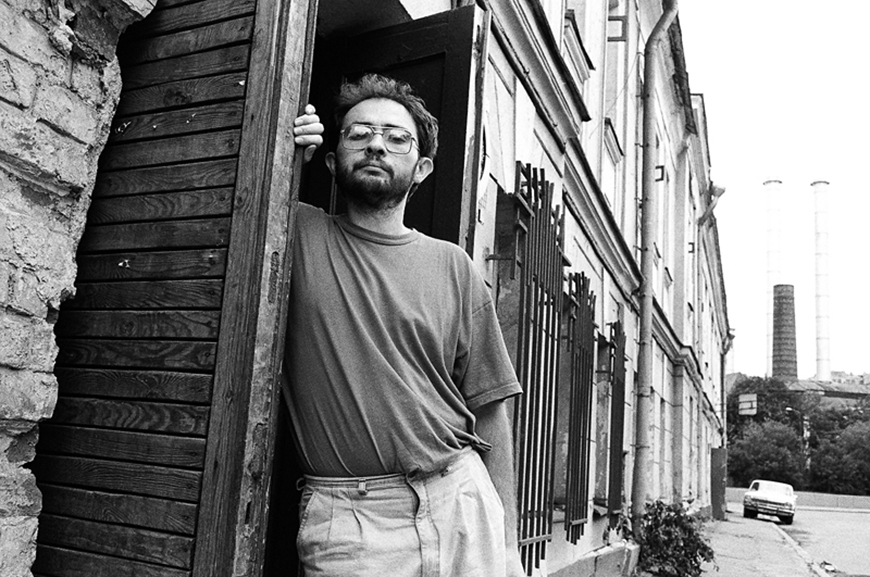
Marat Gelman
However, underground life at the dawn of time rumbled much louder than the first and weak squeaks of business. It seemed that veteran conceptual giants (like Monastyrsky or even Prigov) were already a thing of the past; The ban on free art exports and the West Russian boom, the occupation in Furmanny, which was rapidly “rising” in 1987-1989, died in the air with freedom and relief that needed to be filled with something urgently.
They filled it with a word, according to the old Russian literary-centered tradition. And the word was three letters. Thus, the nineties began when the first superheroes of the period appeared on the scene.
On April 18, 1991, Anatoly Osmolovsky, Grigory Gusarov, Milena Orlova, the current editor-in-chief of the Russian Art Newspaper, and Alexandra Obukhova, the current curator of the Garage archive, appeared on Red Square, surrounded by vagrants from Gogolevsky Boulevard. They quickly lay on the ground, writing a well-known word with their bodies (a line above the “y” had to be a random passerby). MK correspondent took pictures of the corpses in the square. The authorities opened a criminal case against hooliganism. But under pressure from the PEN Center, the Memorial Society and Andrei Voznesensky, the matter quickly ended. But superheroes have only just begun.
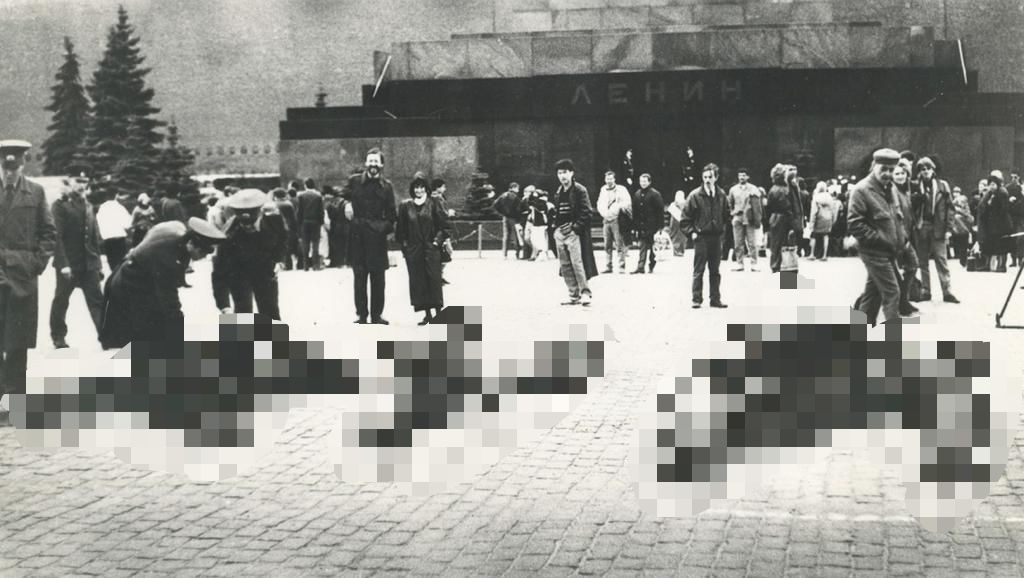
On September 5, 1991, in the attic of a house on the corner of the Trekhprudny and Yuzhinsky lanes, the exhibition “Mercy” by former Rostovite Avdey Ter-Oganyan and ex-Kievian Konstantin “Vinny” Reunov took place. Thus began the public history of “Squatting in Trekhprudny”: in the house captured by the artists (before them, the musicians of the “Civil Defense” were hanged in this abandoned place) exhibitions were held every Thursday. In a loft life of less than two years, 95 exhibitions took place. By the way, when the house went to the Gusinsky holding, Olga Sviblova, choosing works for corporate collections, began to help pay the rent.
Less than a year later, Piglet joined the heroine of Vinnie. In April 1992, the nascent Russian art business faced its first major scandal.
Oleg Kulik, artistic director and exhibitor of the Regina Gallery, owned by financier Vladimir Ovcharenko, and Nikolay, a team of professional butchers, slaughtered a pig outside the gallery walls and distributed fresh meat to everyone. The action was called “The Piglet gives a gift”. Angry public flocked to the free meat.
Animal advocates demonstrated in front of the gallery, and on the pages of the newspaper Trud, famous writer Yuri Nagibin raged at the “giggling of non-humans” and “cows” from the “Church of Satan.” Pieces of “a thoroughly washed pig”. By the way, everything coincided with the parliamentary debate on the abolition of the death penalty.

A new phenomenon has happened here. A citizen of Almaty, who is not very young (more than 35), but ardent and very belligerent, came to the city. After several years of sunbathing on the beaches of Tel Aviv, Alexander Brener came to conquer Moscow. In April 1993 he was pleased with the van Gogh painting in Pushkinskaya (which turned this “pleasure” into the main exhibition) and held his first solo exhibition in September. It took place at the Gelman Gallery and it’s called “My @#$%^!”.
Well, at the end of 1994, the stars finally aligned in the correct position. Brener, Kulik, and Gelman got together and orchestrated perhaps the most emblematic act of the superhero era, the Malayan Yakimanka – “Mad Dog or The Last Taboo Guarded by a Lonely Cerberus.”

“M. Protecting worthless values and concepts – “art”, “masterpiece”, “talent”, “enlightened people”, in front of the door of Gelman’s gallery – lost all orientation, naked, in the cold Kulik barked , ran on chains, knocked the audience down and bit. Alexander Brener, a poet and rebellious artist, treated it as a “true work of art” guarded by him. Hushed by barking, not feeling the cold and the danger, Kulik finally dove into the cars passing by. He managed to stop the flow of cars, ”-“ Nothing inhuman is alien to me ”Book by Oleg Kulik.
-

“A man with a political face”, 1995 -
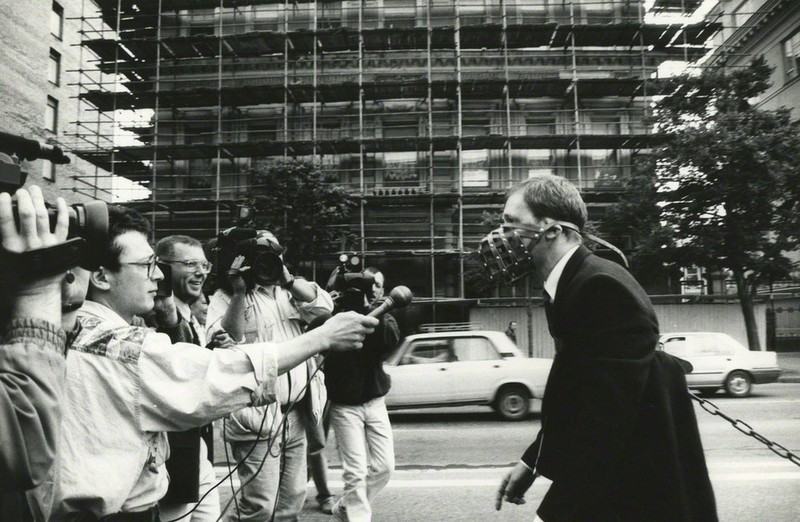
“A man with a political face”, 1995
-
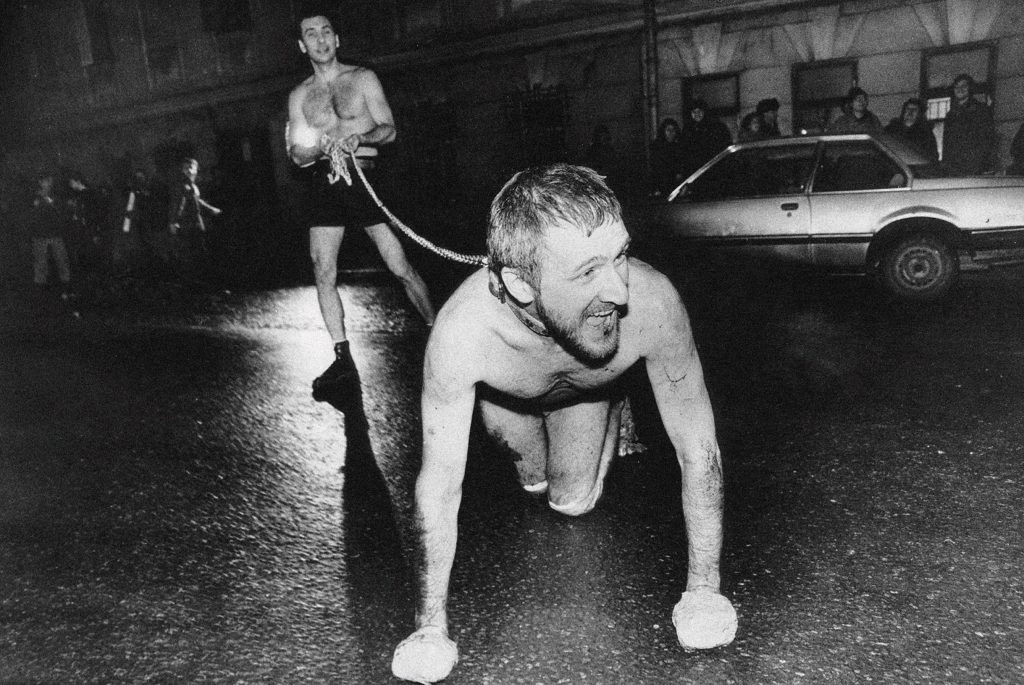
“Mad Dog or The Last Taboo Protected by Lonely Cerberus”, 1994 -

“Mad Dog or The Last Taboo Protected by Lonely Cerberus”, 1994
-

“New Sermon”, 1994 -

“New Sermon”, 1994
-
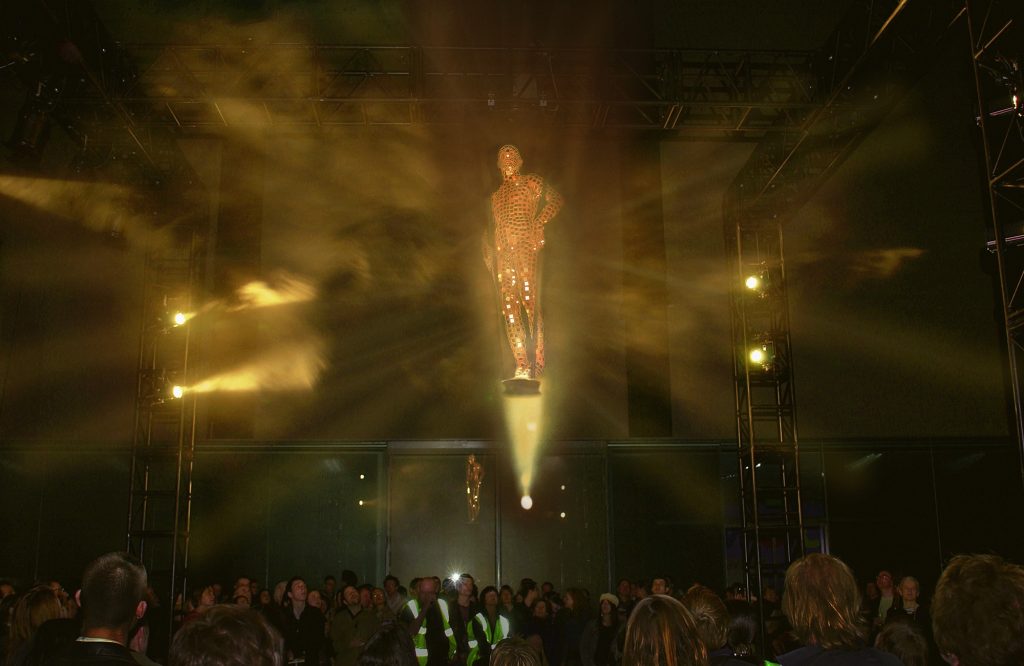
“Battleship for your show”, 2003 -

“Wedding” from the TV series “Russian”, 1999
-
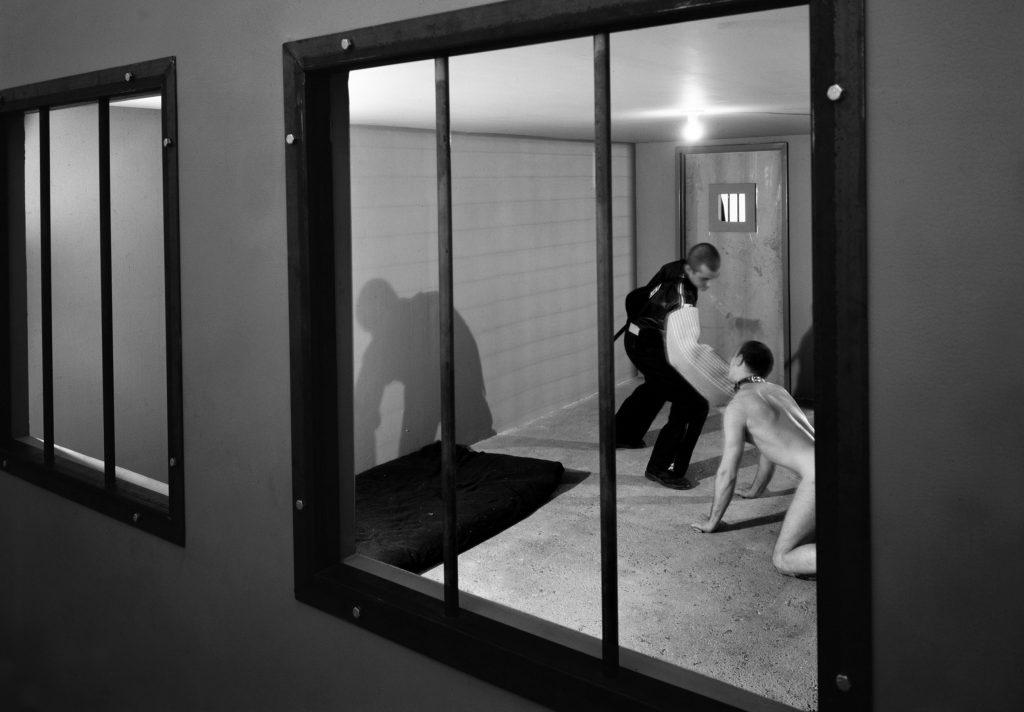
“I bite America, America bites me”, 1997 -

“I bite America, America bites me”, 1997
The era has reached its climax. And so it began to decline. In 1995, Oleg Kulik decided to run for president from the “Animals Party”, but was expelled from there after submitting the signatures of the fly, cockroach and cat to the Central Election Commission. In 1996, Alexander Brener left Russia, in 1998 Ter-Oganyan fled after initiating a criminal case for the act of “Young Atheist” and became Anatoly Osmolovsky in 1999 after the special services raided Lenin’s mausoleum to put up a poster. sad forever.
However, it’s not just superheroes…
While the minds of the art masses were dominated by activists, other equally interesting processes were taking place in the city at the same time.
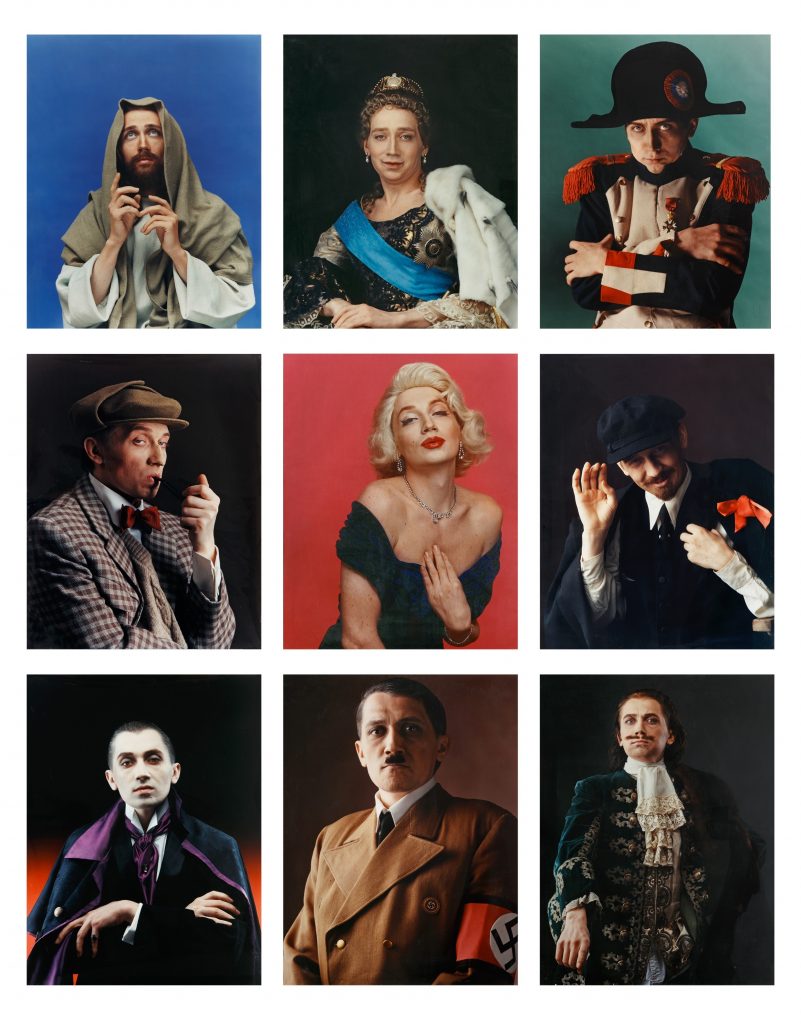
In 1990, Alexander Petlyura, a boy from a large Lugansk family, a graduate of the boarding school and the interior design department of Stroganovka, founded the Art Reserve on Petrovsky Boulevard, which gathered a magnificent collection of costumes and became the center of a new costume. avant-garde fashion. In 1995, St. Vladimir Mamyshev-Monroe, a master of impersonation from St. Petersburg, joined him in this area, and his first exhibition “The Life of the Extraordinary Monroes” became a turning point for the artist – Marilyn and her images. Adolf Hitler is included in the “golden fund” of his imitations.
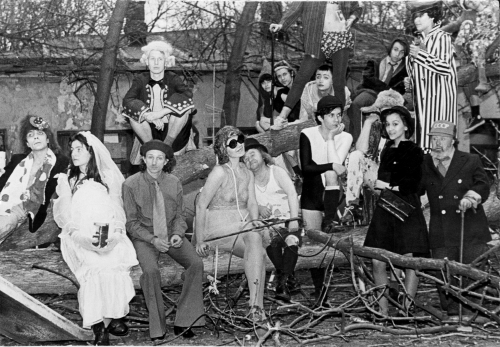
The activist “superhero” party is ideologically opposed by the neo-conceptualist “party” of comfort, a sofa and slippers: the investigators of the Medical Hermeneutics group in Moscow – the young Pavel Pepperstein and Sergey Anufriev “Travels in the labyrinths of the void” Canon”, publish the magazine Obscuri Viri , shift consciousness and dance in praise to exhaustion. Work is moving towards the writing of “Love of Mythogenic Castes” (reprinted). And their friends form the “Cloud Commission” – and hundreds of people monitor and classify clouds over the course of a decade.
And finally, about the compliments – they have become not only a place for the most fashionable youth party, but also a place where Russian digital art can show itself for the first time. The works of Sergey Shutov, the first multimedia artist to move from St. Petersburg, are exhibited here. And Moscow is also becoming one of the world’s most important centers of rising net-plus. In 1996, Alexander Shulgin and Olya Lyalina published a network art manifesto in Kommersant. And his site, My Boyfriend Came Back from War, turns out to be the pinnacle of the new tech genre.
Source: People Talk


